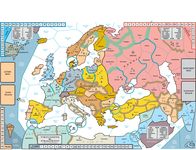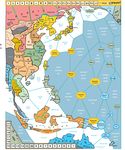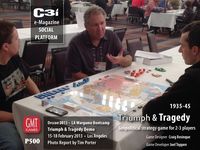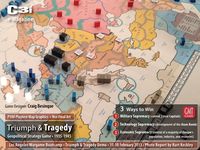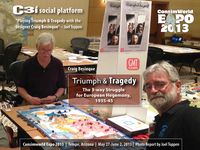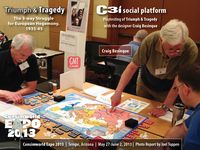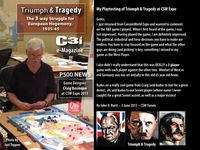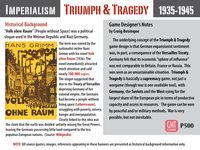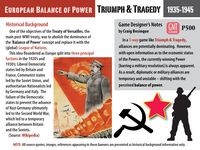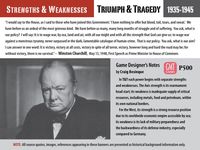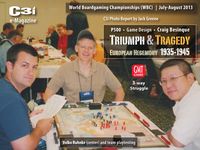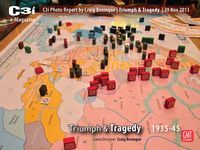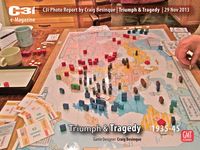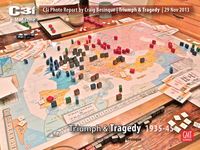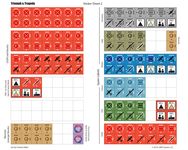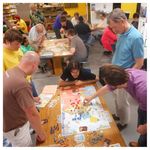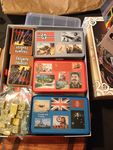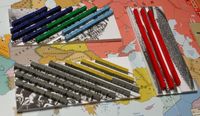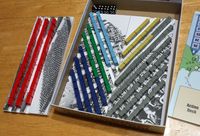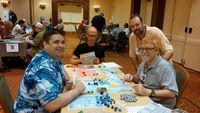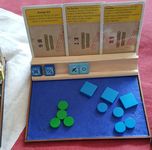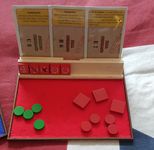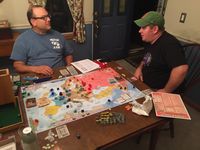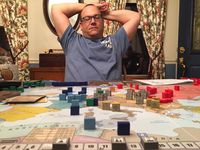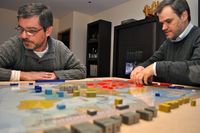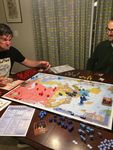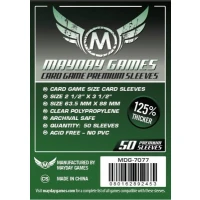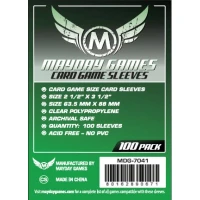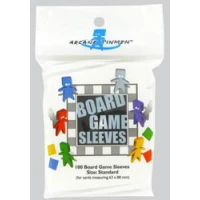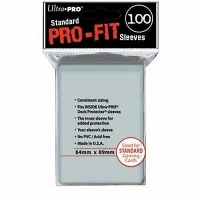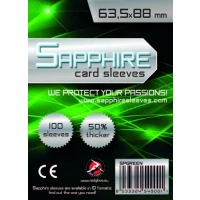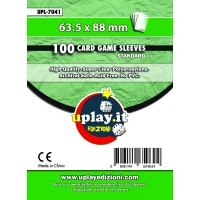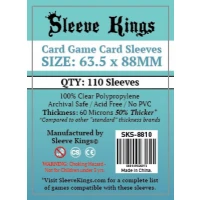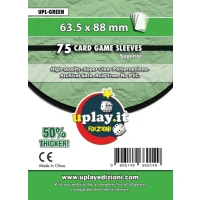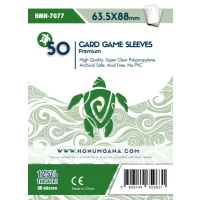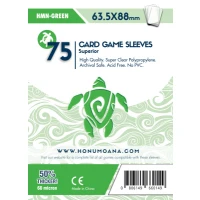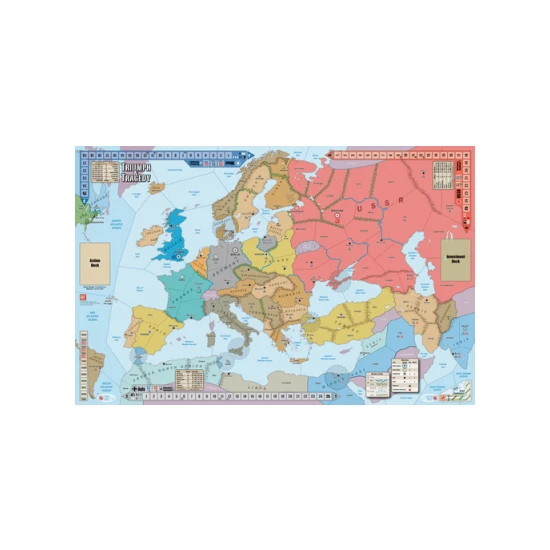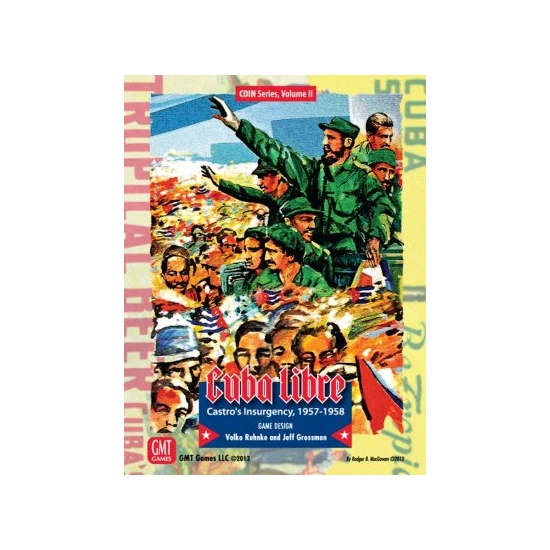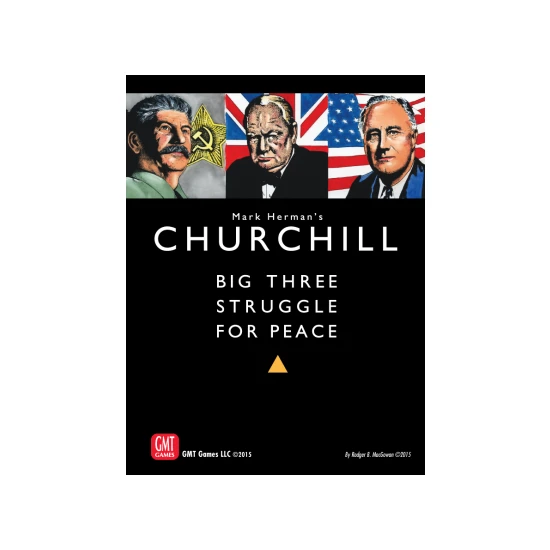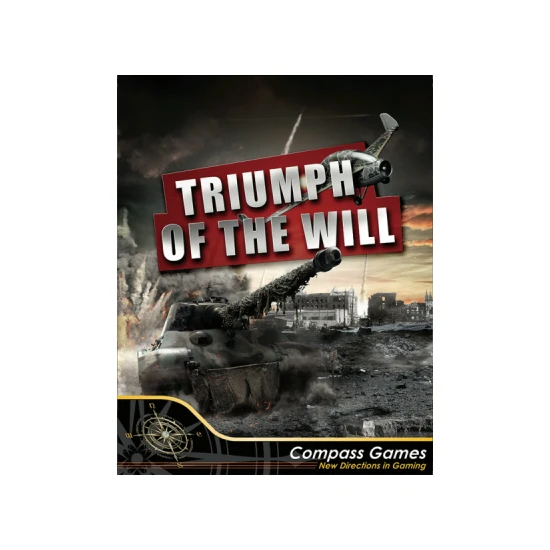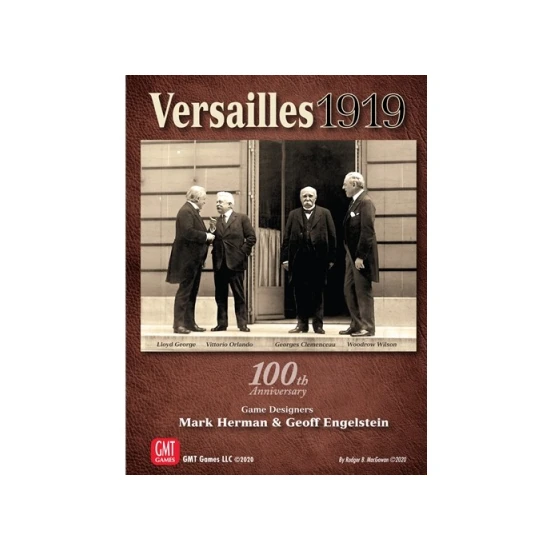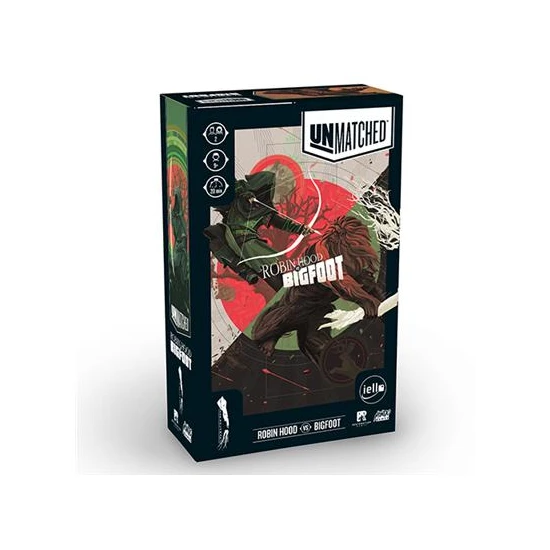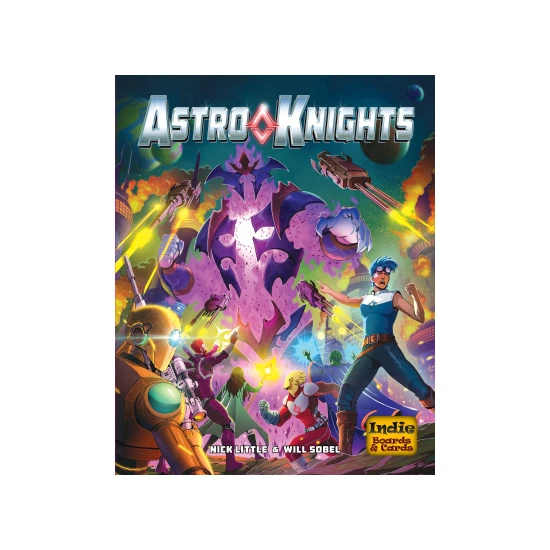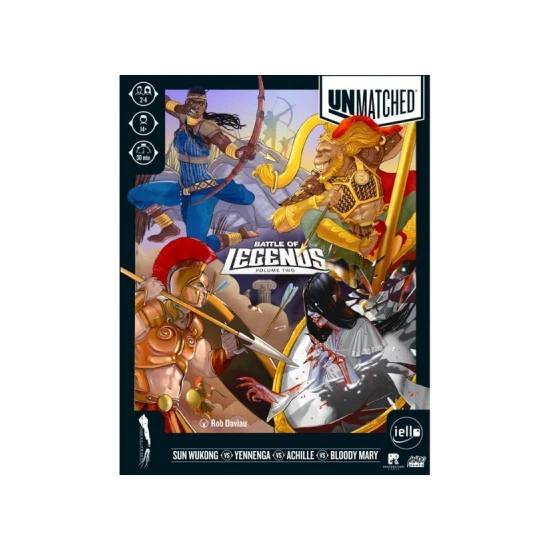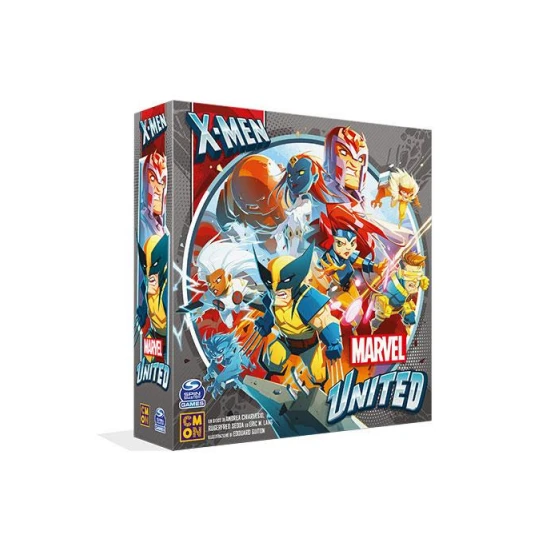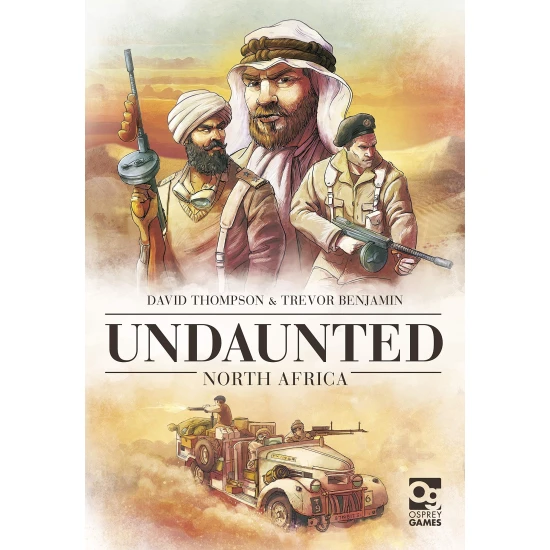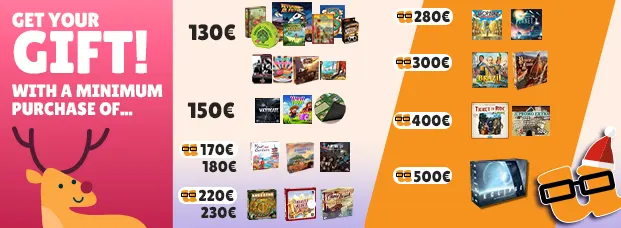

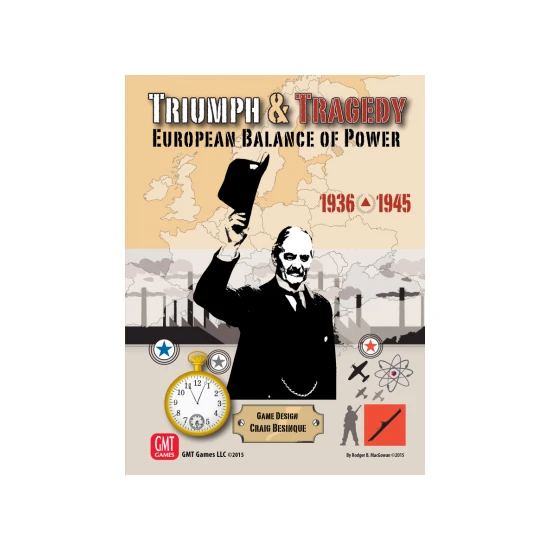
|
|
|
|
2-3
240'
12
Some necessary text
|
Triumph and Tragedy

 The game can be ordered, but we do not have any information about it.
The game can be ordered, but we do not have any information about it.
- 110 cards (63.5mmx88.0mm)
Triumph and Tragedy is a geopolitical strategy game for 3 players (also playable by 2) covering the competition for European supremacy during the period 1935-45 between Capitalism (the West), Communism (the Soviet Union) and Fascism (the Axis). It has diplomatic, economic, technological and military components, and can be won by gaining economic hegemony or technological supremacy (A-bomb), or by vanquishing a rival militarily.
The 22 x 34 area map covers Eurasia to India and the Urals, with the Americas and the eastern British Empire represented abstractly. Military units are 1/2 blocks, of 7 types (Infantry/Tank/Fortress/AirForce/Carrier/Fleet/Submarine), in 6 different colors (Germany/Italy/Russia/Britain/France/USA). The mix of approximately 200 blocks allows great flexibility of force composition. There is a 55-card Action deck and a 55-card Investment deck, plus 30 Peace Dividend chits and 50 markers of various types.
The game starts in 1935, with all 3 Great Powers virtually disarmed: Germany has repudiated the Versailles Peace Treaty, initiating an arms race in Europe. With blocks, the nature of military buildups remain unknown to rivals unless/until military conflict breaks out. The game may end peacefully or there may be war. There are game sanctions for attacking neutral minors or declaring war on an opponent, and rewards for remaining peaceful (you get a Peace Dividend chit of value 0-2 for every year you remain at Peace).
You can win peacefully by:
Economic Hegemony (total of Production + secret Peace Dividend values is the greatest in 1945, or reaches 25 at any time) OR
Technological Supremacy (build the A-bomb which takes 4 stages).
If there is war, you can still win by either of the above methods, or by:
Military Victory (capture of TWO enemy capitals each Great Power has 2).
Economic production underlies all forms of power in the game. Production is the LEAST of controlled Population (cities), controlled Resources, and Industry (which starts low and can be built up with Investment cards). Powers can spend their current economic Production on either:
Military units (new 1-step units or additional steps on existing units), OR
Action cards, which have Diplomatic values (to gain Population and Resources without conflict) and a Command value (to move military units), OR
Investment cards, which have Technological values (to enhance unit abilities) and a Factory value (the only way to increase Industry levels).
Building a unit step or buying a card costs 1 Production. Simple. You can’t inspect cards bought until after you have spent all Production.
The early phase of the game tends to revolve around:
Diplomatic infighting (using Action cards), to gain minor nations (Czech, Rumania, etc) for their Population and Resources.
and Industrial buildup (via Investment cards),
with Military buildups (with the nature of forces being built being unknown to opponents)
and some Technology advancement (also via Investment cards),
and some military movement (using Action cards for Command), which can include Violating (attacking) neutral minors to gain Population/Resources when Diplomacy fails.
If the game continues peacefully due to imposing defenses or player inclination, pressure builds as players approach a Production of 20, as secret Peace Dividend chits may take someone over the 25 Victory threshold. Or players may succeed in developing the Atomic Bomb and steal a victory that way.
At some point, however, one Power (seeing opportunity or necessity) may Declare War on another. The victim gets immediate economic benefits in reaction, but military reality comes to the forefront from this point onward. The third party may well continue its economic development in peace. Or not.
Unit movement is by Command card, which specifies a Command Priority letter that determines order of movement/combat and a Command Value number that determines the maximum number of units that can be moved. Command cards are only valid during one specified Season (Spring/Summer/Fall), so a variety of Command cards in one’s hand is necessary for a Power to be able to move in every Season. But HandSizes are limited, so each player must balance competing demands for card resources with military security.
Combat occurs when rival units occupy the same area, and is executed by units firing in order by Type (defenders firing first amongst equal types), rolling dice for hits. Units have different Firepowers (hit values) depending on the Class of unit they are targeting (land, naval, air, sub). Land combat is one round per Season while sea battles are fought to a conclusion. Units without a Supply line lose 1 step per Season and cannot build (except Fortress units which are immune to both effects but cannot move).
Triumph and Tragedy is a true 3-sided game: there is no requirement that the West and Russia be on the same side (and in fact there are valid reasons to attack each each other), and only ONE player can win the game. Table talk is allowed (and encouraged) but agreements are not enforceable. Alliances are shifting and cooperation is undependable. The game can continue as an economic battle of attrition or a sudden military explosion can change everything. There is immense replayability as players can pursue dominance in Europe via land, sea or air military superiority, technological supremacy, or economic hegemony without rivals realizing their strategy until it is TOO LATE! It is a highly interactive, tense, fast-moving game with little downtime between player turns, covering THE crucial geopolitical decade of the 20th century in 4-6 hours.
Components:
• 22x34" area map
• Approximately 200 5/8" Blocks:
• label sheet (+/- 200 1/2" labels)
• 100 5/8" TWO-SIDED diecut markers
• 55 card Action deck
• 55 card Investment deck
• 16 pp Rulebook
• 16 pp Playbook
• 4 dice
| Mechanics: | Area Control/Area Influence Area Movement Hand Management Secret Unit Deployment |
| Categories: | Economic Political/Negotiation Political/Negotiation Exploration War War |
| Alternative names: | |
| BARCODE: | 817054010851 |
| The item is in 2 carts In 24 wishlists In 3 collections This was seen 9798 times | |
- 110 cards (63.5mmx88.0mm)
Triumph and Tragedy is a geopolitical strategy game for 3 players (also playable by 2) covering the competition for European supremacy during the period 1935-45 between Capitalism (the West), Communism (the Soviet Union) and Fascism (the Axis). It has diplomatic, economic, technological and military components, and can be won by gaining economic hegemony or technological supremacy (A-bomb), or by vanquishing a rival militarily.
The 22 x 34 area map covers Eurasia to India and the Urals, with the Americas and the eastern British Empire represented abstractly. Military units are 1/2 blocks, of 7 types (Infantry/Tank/Fortress/AirForce/Carrier/Fleet/Submarine), in 6 different colors (Germany/Italy/Russia/Britain/France/USA). The mix of approximately 200 blocks allows great flexibility of force composition. There is a 55-card Action deck and a 55-card Investment deck, plus 30 Peace Dividend chits and 50 markers of various types.
The game starts in 1935, with all 3 Great Powers virtually disarmed: Germany has repudiated the Versailles Peace Treaty, initiating an arms race in Europe. With blocks, the nature of military buildups remain unknown to rivals unless/until military conflict breaks out. The game may end peacefully or there may be war. There are game sanctions for attacking neutral minors or declaring war on an opponent, and rewards for remaining peaceful (you get a Peace Dividend chit of value 0-2 for every year you remain at Peace).
You can win peacefully by:
Economic Hegemony (total of Production + secret Peace Dividend values is the greatest in 1945, or reaches 25 at any time) OR
Technological Supremacy (build the A-bomb which takes 4 stages).
If there is war, you can still win by either of the above methods, or by:
Military Victory (capture of TWO enemy capitals each Great Power has 2).
Economic production underlies all forms of power in the game. Production is the LEAST of controlled Population (cities), controlled Resources, and Industry (which starts low and can be built up with Investment cards). Powers can spend their current economic Production on either:
Military units (new 1-step units or additional steps on existing units), OR
Action cards, which have Diplomatic values (to gain Population and Resources without conflict) and a Command value (to move military units), OR
Investment cards, which have Technological values (to enhance unit abilities) and a Factory value (the only way to increase Industry levels).
Building a unit step or buying a card costs 1 Production. Simple. You can’t inspect cards bought until after you have spent all Production.
The early phase of the game tends to revolve around:
Diplomatic infighting (using Action cards), to gain minor nations (Czech, Rumania, etc) for their Population and Resources.
and Industrial buildup (via Investment cards),
with Military buildups (with the nature of forces being built being unknown to opponents)
and some Technology advancement (also via Investment cards),
and some military movement (using Action cards for Command), which can include Violating (attacking) neutral minors to gain Population/Resources when Diplomacy fails.
If the game continues peacefully due to imposing defenses or player inclination, pressure builds as players approach a Production of 20, as secret Peace Dividend chits may take someone over the 25 Victory threshold. Or players may succeed in developing the Atomic Bomb and steal a victory that way.
At some point, however, one Power (seeing opportunity or necessity) may Declare War on another. The victim gets immediate economic benefits in reaction, but military reality comes to the forefront from this point onward. The third party may well continue its economic development in peace. Or not.
Unit movement is by Command card, which specifies a Command Priority letter that determines order of movement/combat and a Command Value number that determines the maximum number of units that can be moved. Command cards are only valid during one specified Season (Spring/Summer/Fall), so a variety of Command cards in one’s hand is necessary for a Power to be able to move in every Season. But HandSizes are limited, so each player must balance competing demands for card resources with military security.
Combat occurs when rival units occupy the same area, and is executed by units firing in order by Type (defenders firing first amongst equal types), rolling dice for hits. Units have different Firepowers (hit values) depending on the Class of unit they are targeting (land, naval, air, sub). Land combat is one round per Season while sea battles are fought to a conclusion. Units without a Supply line lose 1 step per Season and cannot build (except Fortress units which are immune to both effects but cannot move).
Triumph and Tragedy is a true 3-sided game: there is no requirement that the West and Russia be on the same side (and in fact there are valid reasons to attack each each other), and only ONE player can win the game. Table talk is allowed (and encouraged) but agreements are not enforceable. Alliances are shifting and cooperation is undependable. The game can continue as an economic battle of attrition or a sudden military explosion can change everything. There is immense replayability as players can pursue dominance in Europe via land, sea or air military superiority, technological supremacy, or economic hegemony without rivals realizing their strategy until it is TOO LATE! It is a highly interactive, tense, fast-moving game with little downtime between player turns, covering THE crucial geopolitical decade of the 20th century in 4-6 hours.
Components:
• 22x34" area map
• Approximately 200 5/8" Blocks:
• label sheet (+/- 200 1/2" labels)
• 100 5/8" TWO-SIDED diecut markers
• 55 card Action deck
• 55 card Investment deck
• 16 pp Rulebook
• 16 pp Playbook
• 4 dice
| Mechanics: | Area Control/Area Influence Area Movement Hand Management Secret Unit Deployment |
| Categories: | Economic Political/Negotiation Political/Negotiation Exploration War War |
| Alternative names: | |
| BARCODE: | 817054010851 |
| The item is in 2 carts In 24 wishlists In 3 collections This was seen 9798 times | |


